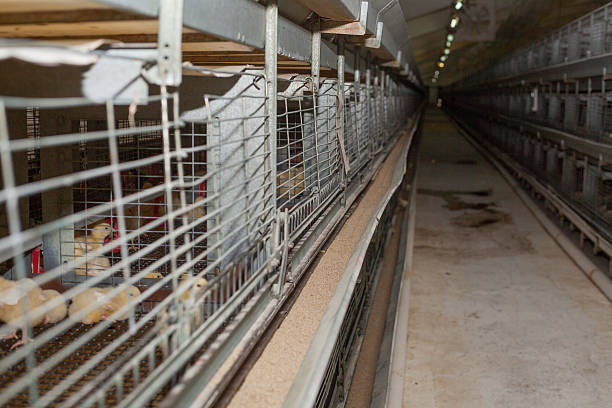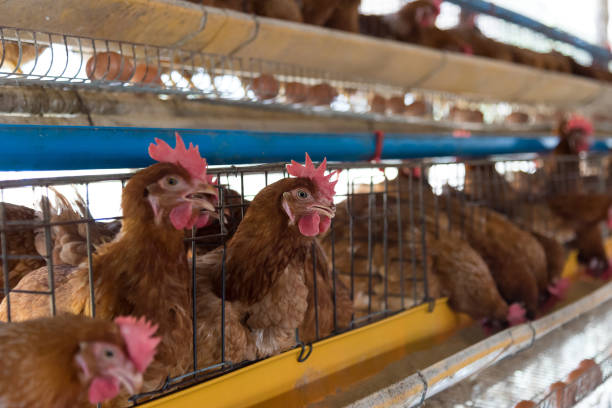Find Broiler Cage Equipment for Sale in Africa: Your Ultimate Guide
Find Broiler Cage Equipment for Sale in Africa: Your Ultimate Guide
Africa’s poultry industry is on the rise, and if you’re looking to tap into the growing demand for chicken meat, you’re in the right place. One of the critical factors in achieving efficient and profitable broiler production is choosing the right broiler cage equipment. This comprehensive guide will walk you through everything you need to know about finding broiler cage equipment for sale in Africa, helping you make informed decisions and maximize your investment.
Why Choose Broiler Cage Systems?
Before diving into where to find the equipment, let’s first understand why broiler cage systems are advantageous. Broiler cages offer several benefits over traditional floor-raising methods:
Improved Space Utilization: Cages allow you to house more broilers in a given area, increasing your production capacity.
Enhanced Hygiene: Broilers in cages have less contact with their droppings, reducing the risk of disease and improving overall hygiene.
Better Management: Cages make it easier to monitor and manage your birds, allowing for better control over feeding, watering, and health.
Reduced Labor Costs: Automated systems for feeding, watering, and waste removal can significantly reduce labor requirements.
Higher Growth Rates: The controlled environment in cages can lead to faster growth and better feed conversion rates.
Key Considerations When Buying Broiler Cage Equipment
Selecting the right broiler cage equipment is crucial for the success of your poultry operation. Here are some key factors to consider:
Cage Design and Dimensions:
Cage Size: Ensure the cage size is appropriate for the breed and number of broilers you plan to raise. Overcrowding can lead to stress, disease, and reduced growth rates.
Cage Material: Opt for durable, corrosion-resistant materials like galvanized steel or stainless steel. These materials will withstand the harsh conditions in a poultry house and ensure longevity.
Floor Design: The cage floor should be designed to allow for easy manure removal and provide comfortable footing for the birds. Mesh or slatted floors are common choices.
Feeding System:
Type of Feeder: Choose between manual or automatic feeding systems based on your budget and labor availability. Automatic systems can save time and ensure consistent feed distribution.
Feeder Capacity: Ensure the feeder capacity is sufficient to meet the birds’ needs, especially during peak growth periods.
Feeder Material: Select feeders made from durable, easy-to-clean materials to prevent feed contamination.
Watering System:
Type of Drinker: Nipple drinkers and cup drinkers are popular options. Nipple drinkers minimize water wastage and maintain hygiene, while cup drinkers are easier for young chicks to use.
Water Pressure: Ensure the watering system provides adequate water pressure to meet the birds’ needs at all times.
Water Filtration: Consider installing a water filtration system to remove impurities and prevent blockages in the drinkers.
Manure Removal System:
Manual or Automatic: Decide whether you want a manual or automatic manure removal system based on your budget and labor availability. Automatic systems, such as scraper systems or belt systems, can significantly reduce labor costs and improve hygiene.
System Capacity: Ensure the system can handle the volume of manure produced by your flock.
Ease of Maintenance: Choose a system that is easy to maintain and repair to minimize downtime.
Ventilation System:
Natural or Mechanical: Determine whether natural ventilation or mechanical ventilation is more suitable for your poultry house. Mechanical ventilation systems, such as fans and air inlets, provide better control over air quality and temperature.
Airflow Rate: Ensure the ventilation system provides adequate airflow to remove moisture, ammonia, and other harmful gases from the poultry house.
Climate Control:
Heating and Cooling: Consider the climate in your region and whether you need heating or cooling systems to maintain optimal temperatures for broiler growth.
Insulation: Proper insulation can help regulate temperature and reduce energy costs.
Automation and Technology:
Environment Controllers: These devices automatically monitor and adjust temperature, humidity, and ventilation based on pre-set parameters.
Feeding and Watering Controllers: These systems automate the feeding and watering processes, ensuring consistent feed and water supply.
Data Monitoring and Analysis: Some systems offer data monitoring and analysis capabilities, allowing you to track key performance indicators and make informed decisions.
Budget and Financing:
Initial Investment: Determine your budget for broiler cage equipment and explore financing options if needed.
Operating Costs: Consider the ongoing operating costs, such as electricity, water, and maintenance, when evaluating different equipment options.
Supplier Reputation and Support:
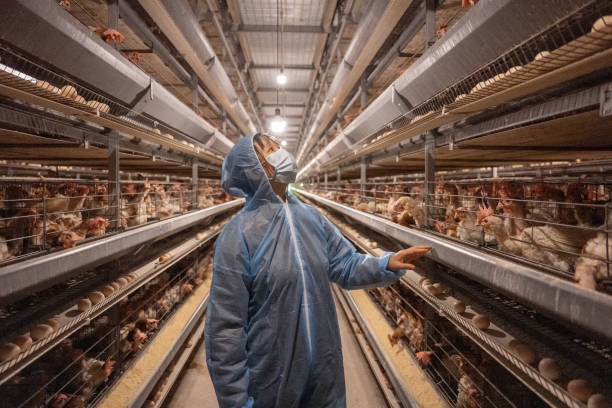
Experience and Expertise: Choose a supplier with a proven track record and extensive experience in the poultry industry.
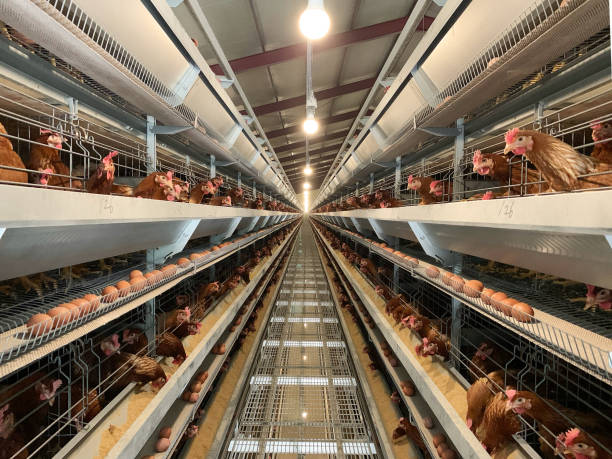
After-Sales Support: Ensure the supplier offers reliable after-sales support, including installation, training, and maintenance services.
Warranty: Look for equipment with a comprehensive warranty to protect your investment.
Where to Find Broiler Cage Equipment for Sale in Africa
Now that you know what to look for, let’s explore the different channels where you can find broiler cage equipment for sale in Africa:
Local Poultry Equipment Suppliers:
Benefits: Local suppliers offer the advantage of proximity, allowing for easier communication, faster delivery, and on-site support.
How to Find Them: Search online directories, attend agricultural trade shows, and ask for recommendations from other poultry farmers.
International Manufacturers and Suppliers:
Benefits: International suppliers often offer a wider range of equipment options and competitive pricing. They may also have more advanced technology and automation solutions.
How to Find Them: Search online marketplaces like Alibaba, Made-in-China, and Global Sources. Attend international poultry exhibitions and conferences.
Online Marketplaces:
Benefits: Online marketplaces provide a convenient platform to compare prices, read reviews, and connect with suppliers from around the world.
Examples: Alibaba, Amazon, eBay, and specialized agricultural marketplaces.
Agricultural Trade Shows and Exhibitions:
Benefits: Trade shows offer a great opportunity to see equipment in person, meet suppliers, and learn about the latest industry trends.
Examples: Agri All Africa, Poultry Africa, and regional agricultural shows.
Poultry Farming Associations and Cooperatives:
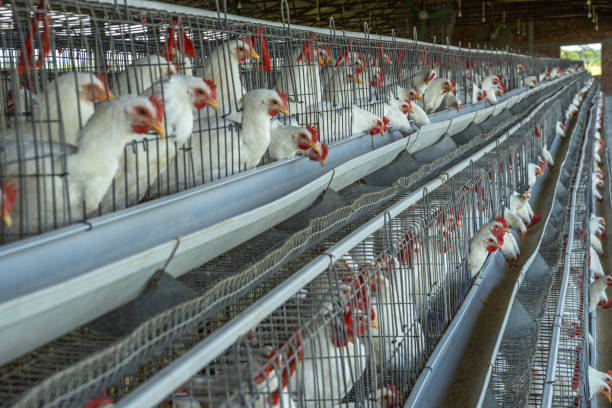
Benefits: These organizations often have networks of suppliers and can provide valuable advice and resources.
How to Find Them: Search online for poultry farming associations and cooperatives in your region.
Tips for Negotiating Prices and Terms
Once you’ve identified potential suppliers, it’s time to negotiate prices and terms. Here are some tips:
Do Your Research: Before negotiating, research the market prices for similar equipment to get a baseline.
Get Multiple Quotes: Obtain quotes from several different suppliers to compare prices and terms.
Bundle Purchases: If you need multiple pieces of equipment, try to bundle your purchases to negotiate a better overall price.
Negotiate Payment Terms: Discuss payment terms with the supplier and try to negotiate favorable terms, such as a down payment followed by installments.
Clarify Warranty and Support: Ensure the warranty covers all essential components and that the supplier offers adequate after-sales support.
Consider Shipping and Installation Costs: Factor in shipping and installation costs when comparing quotes from different suppliers.
Build a Relationship: Building a good relationship with your supplier can lead to better prices and service in the long run.
Common Pitfalls to Avoid
Purchasing broiler cage equipment can be a significant investment, so it’s essential to avoid common pitfalls:
Buying Low-Quality Equipment: Opting for cheaper, low-quality equipment may seem appealing initially, but it can lead to frequent breakdowns, higher maintenance costs, and reduced productivity in the long run.
Not Considering Local Climate: Failing to consider the local climate can result in choosing equipment that is not suitable for your region, leading to poor performance and increased energy costs.
Ignoring Biosecurity Measures: Neglecting biosecurity measures can increase the risk of disease outbreaks, which can decimate your flock and lead to significant financial losses.
Overlooking Labor Costs: Failing to consider labor costs can lead to inaccurate cost projections and reduced profitability.
Not Planning for Expansion: Not planning for future expansion can limit your growth potential and make it difficult to scale your operation.
Steps to Take After Purchasing Broiler Cage Equipment
Once you’ve purchased your broiler cage equipment, follow these steps to ensure a smooth setup and successful operation:
Proper Installation: Ensure the equipment is installed correctly according to the manufacturer’s instructions.
Training: Provide adequate training to your staff on how to operate and maintain the equipment.
Regular Maintenance: Implement a regular maintenance schedule to keep the equipment in good working order.
Biosecurity Measures: Implement strict biosecurity measures to prevent disease outbreaks.
Record Keeping: Keep accurate records of feed consumption, water usage, and bird performance to track your progress and identify areas for improvement.
Continuous Improvement: Continuously monitor your operation and make adjustments as needed to optimize performance and profitability.
Finding the right broiler cage equipment in Africa is an investment in the future of your poultry farm. By carefully considering your needs, researching suppliers, and negotiating favorable terms, you can set yourself up for success in this growing industry. Remember to prioritize quality, durability, and after-sales support to ensure a profitable and sustainable operation. Good luck!




